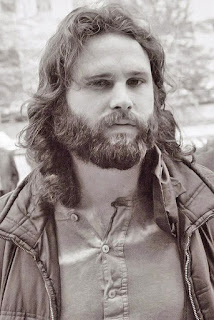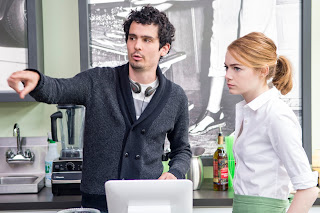This past weekend, on the Reelz series Autopsy: The Last Hours of Kurt Cobain, expert coroner and forensic pathologist Dr. Michael Hunter discussed the medical evidence surrounding the suicide of Cobain 23 years ago. Shortly before Cobain’s death, “his heroin use increased,” Hunter said. “He was using about $400 worth of heroin every day. And that’s $700 in today’s prices.”
Cobain reportedly turned to heroin during his teens, as a painkiller to help him get over a bad back and bad stomach. But as the years went on, his addiction grew out of control, and towards the end, friends were very worried about him. “This is an enormous amount of heroin to take on a daily basis,” said Hunter. “Those that were close to him realized that if they didn’t do something, Kurt was going to die.” The television special featured a graphic recreation of the bloody crime scene of Cobain’s suicide. Source: www.alternativenation.net
Jim Morrison, in all his confusion and self-contradiction —reclusive poet, leather-clad sex god, reluctant celebrity, abusive drunk— remains the conscious or unconscious model for many rock stars who came later, embodying the Dionysian macho-rebel spirit of late-’60s white (male) American youth with psilocybin intensity. Despite the film getting canceled before completion, Feast of Friends is a rare treat for devoted fans. Jim Morrison had the movie star looks, the magnetic charisma, the incredible showmanship, the songs and poems that marked him for the annals of history. Jim Morrison embraced the Jesus complex. The Doors' drummer John Densmore suggested in 1977 he felt that Morrison was the one who stopped the Vietnam war. For a couple of years, Morrison was the best act in American show business. And the best thing about it: It wasn't an act. Source: doblu.com
Kurt Cobain and Jim Morrison were more than songwriters, singers and leads of great bands. They were also poets and took a critical posture among previously complacent mainstream scenes. Both experienced hardships in their lives, even as far back as childhood, and became spokespersons of their respective generations. Kurt was very damaged from his parents divorce. Jim Morrison grew up in a military family and was allegedly molested. Kurt and Jim were both addicted to drugs and alcohol. Jim said that he went through a period when he drank because there was a lot of pressure put on him and he couldn't cope. Deep down Kurt knew drugs were bad. He said that "Drugs are a waste of time. They destroy your memory and your self-respect." Suddenly Kurt and Jim became icons which everyone wanted them to uphold. But they couldn't live with their public images any longer. Both were maniac-depressive and used bitter-tinged witticisms: “We have fun, the cops have fun, the kids have fun. It’s a weird triangle,” said Morrison. "They laugh at me because I'm different; I laugh at them because they're all the same," said Cobain.
Kurt was breaking down. He "genuinely hated the success because he realized, with horror when he reached it, that it involved being an image other people wanted, no longer what he wanted." Jim was also tormented because he felt could no longer live up to the mythology he himself had helped create. Because Jim Morrison didn't want to be a rockstar. Jim Morrison wanted to be a poet. Kurt Cobain was straight: "I am not gay, although I wish I were, just to piss off homophobes." Jim Morrison was also straight but way more experienced than Cobain, having been succesful during the 60's free love era. Before enrolling at UCLA, Morrison attended Florida State University in Tallahassee. At FSU, in 1962, Jim studied art and psychology. In an interview with American Legends, Gerry McClain remembers his fellow FSU student, Jim Morrison, remarking: "Jim was straight. At FSU, he had a girlfriend, Mary Werbelow. Some guy was bending over to talk to her at a party and Jim got jealous. He grabbed the guy by the belt and threw him across the room."
To call Jim Morrison a rock star is just a total insult to him, his intelligence and this philosophy that was inside of him. He was really an easy target for the press because he was so outspoken and he was also saying things that people couldn’t understand. He made great sense, but they couldn’t understand him, so he was a target. They used to make fun of his poetry reciting. The Miami trial was a fucking witch-hunt. Jim was lonely, I think he was very insecure. I don’t think Jim was quite sane. And I don’t think that this was a result of drugs. I think it was a result of childhood pressures and things that he grew up under and the tremendous conflict that he had between this bent twig and what the tree really wanted to be. I mean, he never should have gone through what he went through. He never should have died. –"Jim Morrison: Friends Gathered Together" (2014) by Frank Lisciandro
To call Jim Morrison a rock star is just a total insult to him, his intelligence and this philosophy that was inside of him. He was really an easy target for the press because he was so outspoken and he was also saying things that people couldn’t understand. He made great sense, but they couldn’t understand him, so he was a target. They used to make fun of his poetry reciting. The Miami trial was a fucking witch-hunt. Jim was lonely, I think he was very insecure. I don’t think Jim was quite sane. And I don’t think that this was a result of drugs. I think it was a result of childhood pressures and things that he grew up under and the tremendous conflict that he had between this bent twig and what the tree really wanted to be. I mean, he never should have gone through what he went through. He never should have died. –"Jim Morrison: Friends Gathered Together" (2014) by Frank Lisciandro
































































